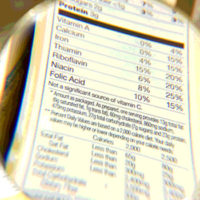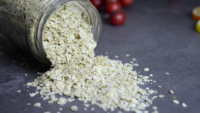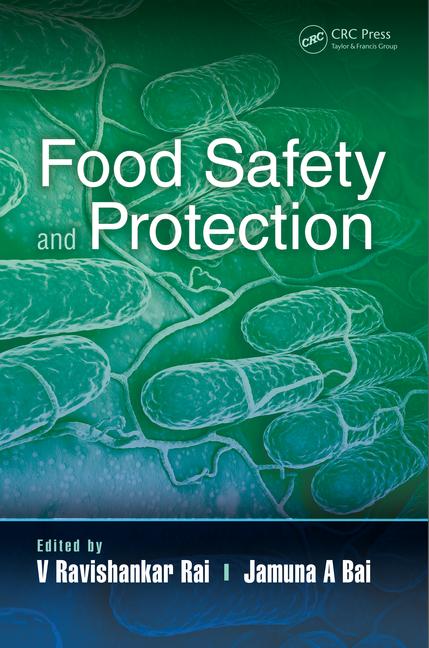Best Practices with Allergen Swabbing

Allergen control is becoming an increasingly important component of the overall food safety programs for the food industry. The recent proposal by the U.S. Food and Drug Administration (FDA) on preventive controls indicates, in part, that allergens should be identified as hazards in situations where undeclared allergens are reasonably likely to occur in the absence of appropriate controls. Thus, allergens become part of the overall Hazard Analysis and Critical Control Points program for many food processing facilities. Accordingly, Critical Control Points must be identified and critical limits must be established. Allergen control approaches must be validated and verified.
Even before the FDA proposal, auditing organizations were evaluating the adequacy of allergen control plans within food manufacturing facilities. The Safe Quality Food (SQF) Institute stated in its 2000 code that “verification of the effectiveness of cleaning and sanitizing of areas and equipment in which allergen-causing agents are used shall be part of the requirements....” The SQF code goes on to indicate “the responsibility and methods used to verify the effectiveness of the cleaning procedures shall be documented and implemented” and that “a verification schedule shall be established.” The general SQF approach does not specify how allergen control practices should be validated and verified.
Similarly, the British Retail Consortium (BRC) global standard for food safety states “based on risk assessment, documented equipment or area cleaning procedures shall be undertaken to remove or reduce to acceptable levels any potential cross-contamination in compliance with finished product specifications.” BRC further indicates that cleaning methods should be validated. Again, the specific approaches to validation are not provided.
Historically, the food industry began to develop allergen control programs in the early 1990s. At that time, the food industry lacked analytical test methods for the detection of residues of allergenic foods with the exception of the so-called Skerritt method to detect gluten. Pragmatically, visual cleanliness became the industry standard for the assessment of the effectiveness of Sanitation Standard Operating Procedures (SSOPs) on shared equipment. Despite its subjective nature, visually clean turned out to be an excellent approach and remains part of the industry’s approach today. Where particulate contamination of shared equipment can occur, sampling for analytical testing can be quite challenging. In those cases, the visually clean standard is appropriate and efficient.
Testing to Verify Allergen Control
Beginning in the mid-1990s, analytical test methods were developed that can be used for the validation and verification of allergen control programs. A wide variety of analytical approaches have since emerged, including enzyme-linked immunosorbent assays (ELISAs) for specific allergen residues, ATP detection, general protein detection, polymerase chain reaction (PCR) to detect DNA fragments from the allergenic food and mass spectrometry methods to detect specific target peptides from allergenic sources. PCR and mass spectrometry require expensive, specialized equipment plus laboratories and highly trained personnel to conduct the analysis and analyze the large quantity of data generated (for mass spectrometry). Accordingly, these methods primarily serve as confirmatory procedures that are not well suited to routine monitoring for validation and verification of allergen control programs.
Allergen-specific ELISAs, ATP tests and general protein tests do exist in formats that can be used within food processing facilities to monitor the effectiveness of allergen controls. Among these methods, allergen-specific ELISAs are the most specific and often are also the most sensitive methods. Commercial ELISA kits have been developed in both quantitative and qualitative formats. While the quantitative format can provide the most information, most food manufacturing facilities don’t have the laboratory equipment or trained personnel to perform quantitative ELISAs. However, any of several specialized laboratories can perform such testing on a fee-for-service basis, including the Food Allergy Research and Resource Program (FARRP) Laboratory at the University of Nebraska (www.farrp.org). Qualitative ELISAs have thus become the most popular test methods within the food industry for use in monitoring allergen controls. Qualitative ELISAs are available as microwell-based methods by which swabs of equipment surfaces, raw ingredients or finished products can be analyzed for allergenic residue or as swabs linked to lateral flow strips. Typically, these methods can detect allergen residues at limits of approximately 5 ppm. Qualitative allergen-specific ELISAs exist for many of the commonly allergenic foods and sometimes for specific components such as gluten and casein.
FARRP has developed an approach to the validation of allergen control programs that works effectively in many circumstances. Certainly, while it isn’t the only approach, it likely contains elements that would be useful in any approach.
Know Your Allergens
The first step in this approach is to know your allergens (see “Understanding Almond Safety.”) The nature of the ingredients derived from allergenic sources is of critical importance. The “allergen load” of the ingredient and its formulation are a very important consideration. Allergen load focuses on the protein content of the ingredient and particularly on the protein from the allergenic source. Since allergens are proteins, ingredients with high levels of protein from the allergenic source represent a higher allergen hazard by comparison with ingredients with no detectable protein from the allergenic source or low levels of protein from the allergenic source. The form of the allergenic food or ingredient is also important—liquid, powder, paste, etc. Some forms will be more difficult to remove. Particulates are of special concern because they can contain appreciable amounts of allergenic proteins. Many formulations contain more than one allergenic ingredient. For allergen validation, the focus should be placed upon the component with the highest allergenic load. In many cases, it may not be necessary to validate removal of all the allergens from a particular formulation. If a vast difference occurs in allergen load (e.g., two allergens in the same formula), then the validation could likely be focused on the allergen in the highest amount. Even in situations where the allergens are more equitable in concentration in the formulation, only one of the allergens can be monitored if all are present in the same form. But if one allergen is present as a paste and another as a liquid, then it may be necessary to validate removal of both.
Choose the Right Test Method
Once you know the identity of the allergens that will be tested for as part of the validation, then you must select an appropriate test method. Qualitative allergen-specific ELISAs tend to be the most sensitive and specific. However, it is imperative to ensure that the ELISA kit will detect residues of the allergen on incompletely cleaned equipment surfaces (the positive control). The level of protein in the ingredient and the effect of processing on the allergen can affect detection. If you fail to detect residues on incompletely cleaned equipment, you should search for a more suitable test kit and not assume that the allergen has been destroyed by processing, an unlikely possibility. However, if the allergen is present in very low amounts, then it may be diluted to a nondetectable level during processing with other ingredients. This possibility can usually be confirmed by sending a sample of the ingredient to a contract laboratory for analysis and then calculating the predicted concentration in the finished product. In cases where calculations indicate a nondetectable level of allergen residue probably would exist, testing for residues is rather pointless.
Develop SSOPs for Each Line
The second step of this approach is to develop an SSOP for each processing line and each formulation. First, we recommend that you manufacture the food product on the line in typical fashion followed by your typical sanitation procedure. This will determine the adequacy of your existing SSOP. After completion of the SSOP, multiple swabs should be taken from equipment surfaces on the line. If allergen residues are not detected on the equipment surfaces, then the SSOP is adequate. Of course, if residues are detectable on equipment surfaces, then further cleaning is needed to achieve an “allergen-clean” status. The coupling of qualitative ELISA testing with visual inspection is often a useful approach. Once an adequate SSOP is identified, then you should repeat the entire process. Manufacture the formulation again. Repeat the SSOP. Do multiple swabbings of the equipment surfaces again once sanitation is complete. If no allergen residues are detectable during two successive cycles, then in our expert opinion, you have effectively validated the SSOP for this line and this formulation. If your company has multiple lines with identical or very similar formulations, this same SSOP should hold for all such lines. However, this SSOP will need to be validated again for any different formulation even if run on the same equipment. By employing several procedures simultaneously, companies may be able to validate that visually clean (or ATP or general protein testing) is a suitable alternative procedure. In the case of particulates, visually clean should always be used as an additional approach, because the allergen swabs will test positive only if the swabbed area happens to contain a particle. Validation test results must be saved as documentation for auditors.
Once the SSOP for a particular formulation on a specific line is validated, further allergen testing is not needed on each subsequent occasion. However, approaches must be developed to verify that the SSOP was applied each and every time. Visual inspections, ATP testing or general protein testing can be used for verification purposes.
The SSOP should periodically be revalidated. Certainly the SSOP should be validated again when anything changes—ingredients, ingredient supplier, formulation, equipment matrix, processing conditions, SSOP parameters, even changes to the allergen test kit. Under stable manufacturing conditions, the SSOP should still be revalidated periodically, but the periodicity is not specified. Revalidation should be done more frequently (perhaps every 6 months) if the formulation is manufactured regularly. More frequent revalidation may be desirable as experience is gained with this SSOP and its use on a particular line for a particular formulation. As time goes by, the degree of confidence in the suitability of the SSOP for allergen control will increase and you can revalidate less frequently.
The ultimate test of the adequacy of the allergen control program would be a test for residues in the finished product using quantitative ELISA. Of course, testing of finished product should be done only after a validated SSOP has been developed when you are reasonably confident that no undeclared allergen will be detected in the finished product. Finished product testing should then be considered on each occasion when the SSOP is revalidated using the swab testing approaches.
Qualitative ELISAs can also be used to test the final rinse water from clean-in-place systems. The final rinse water will likely be quite dilute. Particularly in this case, finished product testing is recommended to ensure that no detectable residues are present.
Qualitative ELISA can be extremely sensitive in some situations. Small areas are often swabbed. Any protein/allergen residue on the swab is then released into a small volume of extraction solution before testing with lateral flow strips. While positive test results may be found on equipment areas that are difficult to clean, detectable residues may not always be found in finished product. The volumes of product flowing down a manufacturing line in many processing facilities are quite large. The residues remaining on the equipment would be considerably diluted by the subsequent product. Thus, finished product testing can sometimes reveal that occasional positive swab test results on equipment surfaces are still tolerable. Of course, great caution should be exercised in interpreting such results and the possible presence of particulates could be especially worrisome.
Recommendations for Testing
FARRP advocates the use of qualitative ELISAs often in combination with quantitative ELISA testing of finished product to validate allergen control approaches. Additionally, several cautions should be emphasized as this approach is applied:
• Be sure to do that positive control and ensure that the qualitative ELISA is suitable for your needs.
• Use the swabs sold by the ELISA kit companies. Not all swabs are created equal. Cheaper swabs may not remove protein/allergen as readily from equipment surfaces. Cheaper swabs may not release that protein/allergen into the extraction solution for the ELISA test. Q-tips® do not work well in our experience. The plastic rods of the inexpensive swabs are sometimes manufactured from recycled milk cartons, which can cause false positives for milk.
• Do not use sponges to attempt to remove allergens from equipment surfaces. Sponges tend not to release protein/allergen residues into the extraction solution.
• Especially, do not use swabs or sponges soaked in bacterial culture media. The culture media may contain allergenic components (such as milk- or soy-derived culture media). Other components of the culture media could interfere with the lateral flow strip.
• Follow the instructions provided by the kit companies for qualitative ELISA. In particular, be sure to avoid opportunities to contaminate the swabs before or after surface swabbing is done.
• Most swabbing research has been conducted on stainless steel surfaces. The swab may be less able to remove those protein/allergen residues from other types of surfaces.
• Do not swab only flat, smooth areas. It is important to swab other food contact surfaces, such as crevices, joints, etc., which likely are harder to get clean of all allergen residue.
• Quantitative and qualitative ELISAs do not exist for several commonly allergenic foods, especially fish. In these situations, use either a surrogate allergen-specific ELISA test of another high-protein allergenic component of the formulation or use a general protein test.
Using this approach, the validation of allergen control programs can work effectively in many circumstances and has elements that would be useful in any approach applied.
 Joseph L. Baumert, Ph.D., is assistant professor in the department of food science & technology and codirector of the Food Allergy Research and Resource Program at the University of Nebraska, Lincoln.
Joseph L. Baumert, Ph.D., is assistant professor in the department of food science & technology and codirector of the Food Allergy Research and Resource Program at the University of Nebraska, Lincoln.
 Steve L. Taylor, Ph.D., is professor in the department of food science & technology and codirector of the Food Allergy Research and Resource Program at the University of Nebraska, Lincoln.
Steve L. Taylor, Ph.D., is professor in the department of food science & technology and codirector of the Food Allergy Research and Resource Program at the University of Nebraska, Lincoln.
Food Safety Magazine (FSM): What are some of the unique challenges of almonds in terms of the safety profile?
Blue Diamond Global Ingredients Division: Almonds need to be stored properly to retain their goodness and quality, but when proper care is taken, almonds last longer than any other nut. In 1986, an extensive almond shelf-life program was established. Since then, hundreds of products have been tested, monitored and studied. Our data show that almonds have a longer shelf life in comparison to other nutmeats, which is a key factor in product development for food innovators.
FSM: When incorporating almonds into other food products, what do processors most need to consider in terms of product safety?
Blue Diamond: To ensure almond quality, the nut should be stored or displayed in a cool, dry place and avoid prolonged exposure to direct sunlight. If almonds are exposed to oxygen, autoxidation takes place, causing breakdown of the product. This results in off-flavors and other problems, such as rancidity. Almonds should never be stored in the same area as strong-smelling commodities, including onions, apples, fish, etc. Additionally, almonds can be stored in the freezer, which extends almond shelf life significantly. However, proper packaging must be used to protect the almonds from moisture and ice crystal formation.
FSM: Do other almond products, such as almond meal, have different safety challenges?
Blue Diamond: For all almond products, a mandatory statewide safety program for pasteurization was established in 2007. Therefore, there is no difference if the almond is used raw or as another product, such as almond meal or almond butter. The pasteurization process must still occur.
FSM: As nuts are an allergen, what should one do to reduce contamination in receiving areas that have just accepted a shipment of raw almonds?
Blue Diamond: Almonds are included in the nut category, one of the top eight food allergens. Receiving department personnel should follow their company’s allergen management procedure as they would for any of the other top eight food allergen products.
Looking for a reprint of this article?
From high-res PDFs to custom plaques, order your copy today!








